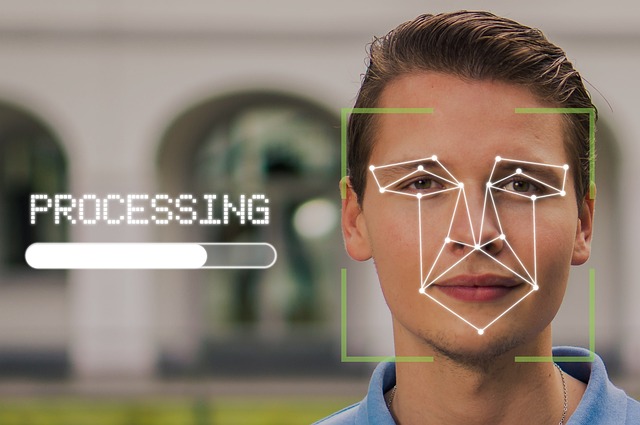Artificial Intelligence (AI) has revolutionized various fields, and image and video recognition is one of the most impactful applications. Leveraging advanced algorithms, AI systems can analyze visual content, identify patterns, and make decisions based on what they “see.” This technology is transforming industries such as healthcare, retail, and security, making processes more efficient and accurate. In this blog post, we will explore the various facets of AI in image and video recognition and how you can utilize these technologies in your business.
Understanding AI Image Analysis Techniques
AI image analysis techniques are essential for effectively interpreting visual data. These techniques involve processing and analyzing images to extract meaningful information. The most common approach is through machine learning, where algorithms are trained on large datasets to recognize specific patterns and features.
For instance, in the realm of image classification, supervised learning is often employed. This method requires labeled datasets, where each image is tagged with its respective category. The AI model learns from these examples and can accurately classify new, unseen images. Furthermore, deep learning techniques, particularly Convolutional Neural Networks (CNNs), have shown remarkable success in image recognition tasks due to their ability to automatically learn spatial hierarchies of features.
In practical applications, these techniques can be used for tasks like automated tagging of images in digital asset management systems, enabling businesses to organize and retrieve visual content efficiently. The advancements in AI image analysis not only save time but also enhance the accuracy of visual data interpretation, leading to better decision-making.
Computer Vision Applications
Computer vision applications have become increasingly prevalent, showcasing the diverse capabilities of AI in understanding and interacting with visual data. From autonomous vehicles to industrial automation, computer vision plays a crucial role in various sectors. In the retail industry, AI-driven image recognition can enhance customer experiences by enabling personalized recommendations based on visual cues.
For example, AI systems can analyze customer behavior in stores through video feeds, identifying which products attract the most attention. This data can be utilized to optimize product placement and marketing strategies. Additionally, in healthcare, AI-powered image recognition assists in diagnosing medical conditions by analyzing X-rays, MRIs, and other medical images, leading to earlier and more accurate detection of diseases.
Moreover, security systems benefit from computer vision applications through facial recognition technology. This capability allows for the identification of individuals in real-time, enhancing security measures in public spaces and private establishments. The versatility of computer vision applications continues to expand as technology evolves, presenting new opportunities for businesses to leverage AI for improved efficiency and accuracy.
Deep Learning for Image Recognition
Deep learning has become a cornerstone of image recognition technology, enabling machines to perform tasks that were previously thought to be exclusive to humans. Utilizing multi-layered neural networks, deep learning models can automatically extract features from images without the need for manual intervention. This self-learning capability is what makes deep learning particularly powerful in image recognition tasks.
One notable application of deep learning in image recognition is in the automotive industry, where it facilitates the development of advanced driver-assistance systems (ADAS). These systems rely on real-time image processing to detect obstacles, lane markings, and traffic signs, ensuring safer driving experiences. By continuously learning from new data, deep learning models can improve their accuracy and adaptability, making them invaluable in dynamic environments.
Additionally, deep learning techniques have been instrumental in enhancing the quality of image processing tasks, such as super-resolution and image denoising. These improvements allow for better visual experiences in various applications, from streaming services to security surveillance. As the capabilities of deep learning continue to expand, businesses can leverage this technology to enhance their image recognition processes and drive innovation.
Object Detection with AI
Object detection is a critical aspect of image and video recognition that involves identifying and locating objects within visual content. This capability has a wide range of applications, from enhancing user experiences in augmented reality to enabling efficient inventory management in warehouses. By utilizing algorithms that can process images in real-time, businesses can gain valuable insights from visual data.
For instance, in the field of retail, AI-powered object detection can automate the monitoring of stock levels on shelves. By analyzing video feeds from cameras, the system can identify which products are running low and alert staff to replenish inventory, ensuring that customers always find what they need. This not only improves customer satisfaction but also optimizes operational efficiency.
Moreover, in the realm of safety and security, object detection plays a vital role in surveillance systems. AI can analyze video feeds to identify suspicious behavior or detect unauthorized access to restricted areas. This proactive approach to security helps organizations respond to potential threats swiftly, ensuring a safer environment for employees and customers alike. The ability to detect and respond to objects in real-time exemplifies how AI can enhance both operational efficiency and security measures.
Facial Recognition Technology
Facial recognition technology has emerged as one of the most prominent applications of AI in image recognition. By analyzing facial features, AI systems can accurately identify individuals in images and videos. This technology has garnered attention for its potential to enhance security, streamline processes, and even personalize user experiences.
In security settings, facial recognition systems can quickly identify individuals entering a building, providing an additional layer of protection against unauthorized access. Law enforcement agencies also utilize this technology to locate missing persons or identify suspects in criminal investigations, significantly reducing the time and resources needed for such efforts.
Beyond security, facial recognition technology is making strides in marketing and customer engagement. Retailers can use this technology to recognize loyal customers and tailor their shopping experiences accordingly. By analyzing customer preferences and behaviors, businesses can deliver personalized recommendations and promotions, ultimately enhancing customer satisfaction and loyalty.
However, the deployment of facial recognition technology also raises ethical considerations, particularly concerning privacy and surveillance. As organizations embrace this powerful tool, they must navigate the balance between security and individual privacy rights to ensure responsible use of the technology.
Image Classification using AI
Image classification using AI is the process of categorizing images based on their content. This technique has vast applications across different industries, including agriculture, healthcare, and e-commerce. By utilizing machine learning algorithms, businesses can automate the classification of images, saving time and resources while increasing accuracy.
In agriculture, for example, AI-powered image classification can assist farmers in monitoring crop health. By analyzing images captured through drones or satellites, the system can identify areas of distress, such as pest infestations or nutrient deficiencies. This allows farmers to take timely actions to protect their crops, leading to increased yields and reduced losses.
In healthcare, image classification plays a crucial role in diagnostics. AI can analyze medical images, such as X-rays and CT scans, to classify conditions like tumors or fractures. By automating this process, healthcare professionals can focus on treatment rather than time-consuming image analysis, ultimately improving patient outcomes.
Furthermore, in the e-commerce sector, image classification can enhance product recommendations. By categorizing products based on visual attributes, businesses can offer personalized shopping experiences, guiding customers to items that align with their preferences. The ability to effectively classify images through AI not only streamlines processes but also enriches user experiences across various sectors.
Video Content Analysis
Video content analysis (VCA) is an extension of image recognition that focuses on extracting meaningful information from video feeds. This technology enables organizations to derive insights from real-time video data, enhancing decision-making processes in various applications.
One significant application of VCA is in security and surveillance. AI algorithms can analyze video feeds to detect unusual activities, such as trespassing or loitering. This capability allows for proactive security measures, enabling quick responses to potential threats. Additionally, VCA can assist in crowd management during large events by analyzing crowd dynamics and identifying potential safety hazards.
In retail, video content analysis can provide valuable insights into customer behavior. By tracking customer movements within a store, businesses can analyze foot traffic patterns, optimizing store layouts and product placements. This data-driven approach enhances the shopping experience and increases sales opportunities.
Moreover, VCA is increasingly being integrated into media and entertainment. By analyzing viewer engagement with video content, platforms can personalize recommendations, improving user satisfaction and retention. The applications of video content analysis are vast, making it a critical component of modern AI-driven solutions.
Real-time Video Processing
Real-time video processing refers to the ability to analyze video feeds instantaneously, allowing for immediate responses to detected events. This technology is crucial in applications where time is of the essence, such as in autonomous vehicles or security surveillance.
In the automotive industry, real-time video processing enables self-driving cars to navigate their environments safely. By analyzing video feeds from cameras and sensors, these vehicles can detect obstacles, pedestrians, and traffic signals, making split-second decisions to ensure safe operation. The advancements in this technology are paving the way for a future with increased mobility and reduced accidents.
In the realm of security, real-time video processing enhances surveillance capabilities. AI systems can analyze video feeds continuously, identifying unusual behaviors or incidents as they occur. This proactive monitoring allows security personnel to respond promptly to threats, ensuring a safer environment for businesses and public spaces.
Furthermore, in the field of sports and entertainment, real-time video processing can enhance viewer experiences. By analyzing game footage, broadcasters can provide instant replays and highlights, engaging audiences more effectively. The ability to process video data in real-time not only improves safety and security but also enriches user experiences across various domains.
Conclusion
The integration of AI for image and video recognition is transforming industries and enhancing operational efficiencies. From advanced image analysis techniques to real-time video processing, the applications are vast and varied. By leveraging AI, businesses can automate processes, improve decision-making, and deliver personalized experiences to customers. As technology continues to advance, the potential for AI in image and video recognition will only grow, opening new avenues for innovation and efficiency. Embracing these technologies today will position organizations for success in the ever-evolving digital landscape.






